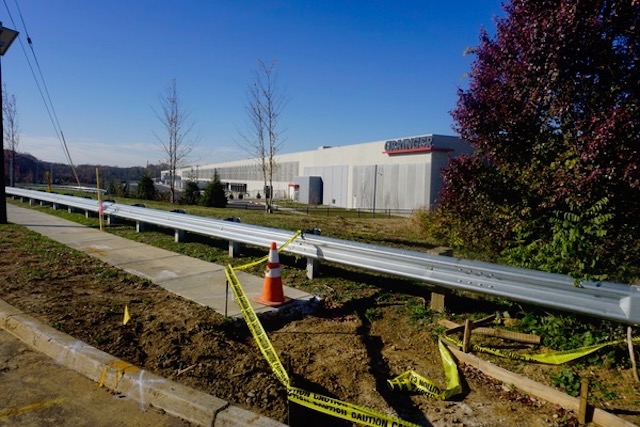DEP Will Rely Exclusively On Pollution Controls
DEP Not Required To Consider And Can Ignore Legally Meaningless Local Comments
Overburdened Communities And EJ Activists Were Duped
[Updates Below]
The Murphy DEP issued another self congratulatory press release today announcing the adoption of the proposed environmental justice regulations.
I am reading the 398 page DEP adoption document and response to public comments right now, so will limit my writing now to get out a crucial issue that proves – in DEP’s own words – that the EJ regulations are toothless (and actually LESS stringent than the statute).
Let’s hope the “journalists” out there read the documents – not just the DEP press release – and talk to experts, not just Murphy DEP cheerleaders.
Below is text from the documents that exposes DEP’s claims that the law prevents them from denying permits
(In fact, contrary to DEP’s claims, the statute actually authorizes DEP to deny permits for new facilities. The law does not provide authority to DEP to deny renewal of existing permits for existing facilities. DEP admits this too: (@ p. 120)
The adopted rules are consistent with N.J.S.A. 13:1D-160, which establishes that the Department may not deny, but may only apply conditions to a permit for the expansion of an existing facility, or the renewal of an existing facility’s major source permit.
This limitation of DEP power to deny permits to existing facilities is actually WEAKER than current environmental laws, which provide clear authority to deny or revoke permits for facilities that are creating unacceptable risks or impacts. Great job EJ activists!)
[Note: The “technical feasibility” standard in these rules to determine the stringency of pollution controls is WEAKER than current NJ Air Pollution Control Act’s “advances in the art of pollution control” standard (also referred to as “State-of-the-art” or SOTA.
DEP explicitly grandfathered existing pollution sources from more stringent requirements (p. 316)
The Department has allowed feasible control measures for facilities renewing their Title V air permits.
Activists again duped in the regulatory fine print.]
In this response, DEP announces a major policy concession: that DEP will never deny permits, – for existing facilities, expansions, AND new facilities – but instead rely exclusively on pollution controls (and mitigation).
In response to critical comments by the business community, DEP admits this on page 52-53:
“the adopted rules do not prevent construction of new facilities or continued operation or expansion of existing facilities in overburdened communities. Rather, the procedures set forth in the rulemaking seek to fully and accurately assess facilities’ impacts to baseline environmental and public health stressors in overburdened communities and implement appropriate and feasible conditions necessary to avoid disproportionate impacts. As set forth in the notice of proposal, 54 N.J.R. 985-986, the Department does not anticipate that the adopted rules will prevent construction of new subject facilities provided the proper environmental controls are instituted to avoid disproportionate impacts upon overburdened communities. Moreover, only certain types of facilities are subject to the adopted rules at all, and existing facilities of those types are only required to comply with the rules when they seek to renew a major source permit pursuant to the Air Pollution Control Act ( APC Act) or seek to expand operations. In both instances,the APC Act specifically prevents the Department from denying applications or preventing continued operation, authorizing only the implementation of protective permit conditions.”
Where does the NJ APC Act say this? DEP does not provide a citation or legal text.
This is absurd. It would mean that a toxic polluter that created unsafe or unhealthy conditions could not be shut down and permits denied. Even DEP’s flawed “acceptable risk” Technical Manual for Risk Assessment very clearly says DEP can deny an air permit if emissions exceed unacceptable risks.
DEP reiterates this totally lame interpretation later in a conclusion on page 55:
Accordingly, the Department does not anticipate that the rules will result in a loss of economic opportunities for covered facilities as speculated by commenters. New covered facilities will not be prevented from being sited in overburdened communities where their operations can avoid a disproportionate impact or if a compelling public interest is shown, and existing facilities are ensured the right to continue or expand operations subject to appropriately protective conditions.
This is a major concession to the regulated business community.
Everyone was duped – this is even a worse interpretation of DEP authority than the law actually provides and makes DEP even worse than the many criticisms I have made.
The law does not authorize DEP to deny a permit renewal for an existing facility – but it clearly provides authority to deny permits for new facilities.
More to follow as I read the documents.
[Update #1 – DEP made another concession and created another large loophole for “public works” projects, which allegedly would reduce stressors. Industry commenters identified these projects, including under pending legislation, as various energy projects and major new pollution sources under the guise of “public-private partnerships”, which would also include garbage incinerators and “micro-grid” fossil power plants: (@ page 62)
Consistent with the Legislative intent to reduce the environmental and public health stressors within overburdened communities due to historic inequities in facility siting, notwithstanding the economic benefits associated with such facilities, the compelling public interest standard allows the Department to consider whether a proposed facility, such as a public works project, would directly reduce adverse environmental or public health stressors in the host overburdened community, thereby serving an essential environmental, health, or safety need of the host overburdened community and provides an appropriate pathway to allow projects that address host community needs, such as appropriately scaled food waste facilities, public water infrastructure, renewable energy facilities, and projects designed to reduce the effects of combined sewer overflows.
And reiterated and expanded this interpretation on page 66:
to provide a level of guidance, the Department expressly provided in the notice of proposal Summary, and in the adopted rules at N.J.A.C. 7:1C-5.3(c), that facilities, such as a public works project, that would directly reduce adverse environmental or public health stressors in the host overburdened community are the types of facilities that are likely to serve an essential environmental, health, or safety need of the host overburdened community. The Department also provided a non-exclusive list of illustrative examples of potential qualifying projects, such as appropriately scaled food waste facilities, public water infrastructure, renewable energy facilities, and projects designed to reduce the effects of combined sewer overflows.
[Update #2 – The introduced version of the EJ legislation included a provision that would allow local governments to veto permits and approvals independent of DEP – i..e vote NO to stop a project. That local veto provision was stripped out of the bill Gov. Murphy signed into law.
The law also included a huge loophole for projects that would provide a “compelling public interest”.
In an attempt to address these severe weakness in the law and enhance the power of local residents, a commenter suggested that DEP change the word “may” to “shall” to force DEP to consider local comments: (p. 96)
Public Input – “May” vs. “Shall”
142. COMMENT: The regulation should be modified from “may consider public input” regarding the public interest exception to “shall consider public input.”
Revealingly, DEP denied that request and is not required to consider local comment, and they did so with incredible bureaucratic gaslighting: (p. 98
Given the criticality of ensuring that this provision remains narrowly tailored to maintain the integrity of the adopted rules, the need to assess the relativity and credibility of public interest related to a specific application, and the infeasibility in establishing an appropriate numerical standard to gauge public interest, the Department believes the more permissive “may” rather than a mandatory “shall” is appropriate to provide the Department with the necessary flexibility to assess public interest and consider it as a determinative factor in its assessment of compelling public interest only where appropriate. This provides the appropriate balance in providing communities self-determination while maintaining the Department’s statutory decision-making authority. To maintain this balance, the Department is committed to considering all public input and will heavily weigh significant opposition or support for any given project from individuals in the host overburdened community in its decisions under the adopted rules.
What this does is make public comments legally meaningless and unenforceable. It provides unbounded discretion to DEP to ignore or not really respond to public comments.
The DEP is given the sole power to “assess compelling public interest” and your comments don’t legally mean jack shit.
That’s all you need to know – DEP will allow the public interest loophole to be exploited and will ignore local opposition and outrage.
Duped again! Strike 3, you’re out.
[Update #4 – this is another quiet loophole – garbage transfer stations that use rail: (@ p. 125)
Comment: DEP’s regulations require the registration and licensing of intermodal container facilities, so these facilities must obtain the “permit, registration, or license issued by the department” that triggers the EJ Law process. Thus, DEP’s final EJ Rule should make clear that these intermodal container facilities are also covered by the EJ Law
RESPONSE
The Department agrees that it was the intention of the EJ Law to include transfer stations, however the Department’s solid waste rules explicitly do not include intermodal containers facilities as solid waste facilities per the definition of “solid waste facility” at N.J.A.C. 7:26-1.4.… the Department does not consider intermodal container facilities to be transfer stations or other solid waste facilities. [Note: therefore they are not regulated by the EJ law definition of “permit”]
[Update #5 – another loophole – land application of sludge is exempt not by statute because DEP narrowly defined the NJPDES permits to include individual permits, not NJPDES General Permits. That also means hundreds of NJPDES General Permits are exempt too (see page 126-127)
[Update #6 – another set of loopholes – and there are a lot of surface impoundments and land treatment units, including hazardous waste sites. Landfill closure and disruption permits are pretty nasty operations (p. 129):
Additionally, to the extent a surface impoundment, waste pile, or other land treatment unit would not otherwise be considered a landfill under the existing rules, it would be exempt.
The Department notes that landfills are subject to the rules to the extent they require a permit as defined at N.J.A.C. 7:1C-1.5, which notably excludes those permits, including certain landfill disruption permits, “necessary to perform a remediation,” ensuring that necessary remedial activities may continue.
I gotta stop before I puke – and I’m only on page 130. More to follow.

